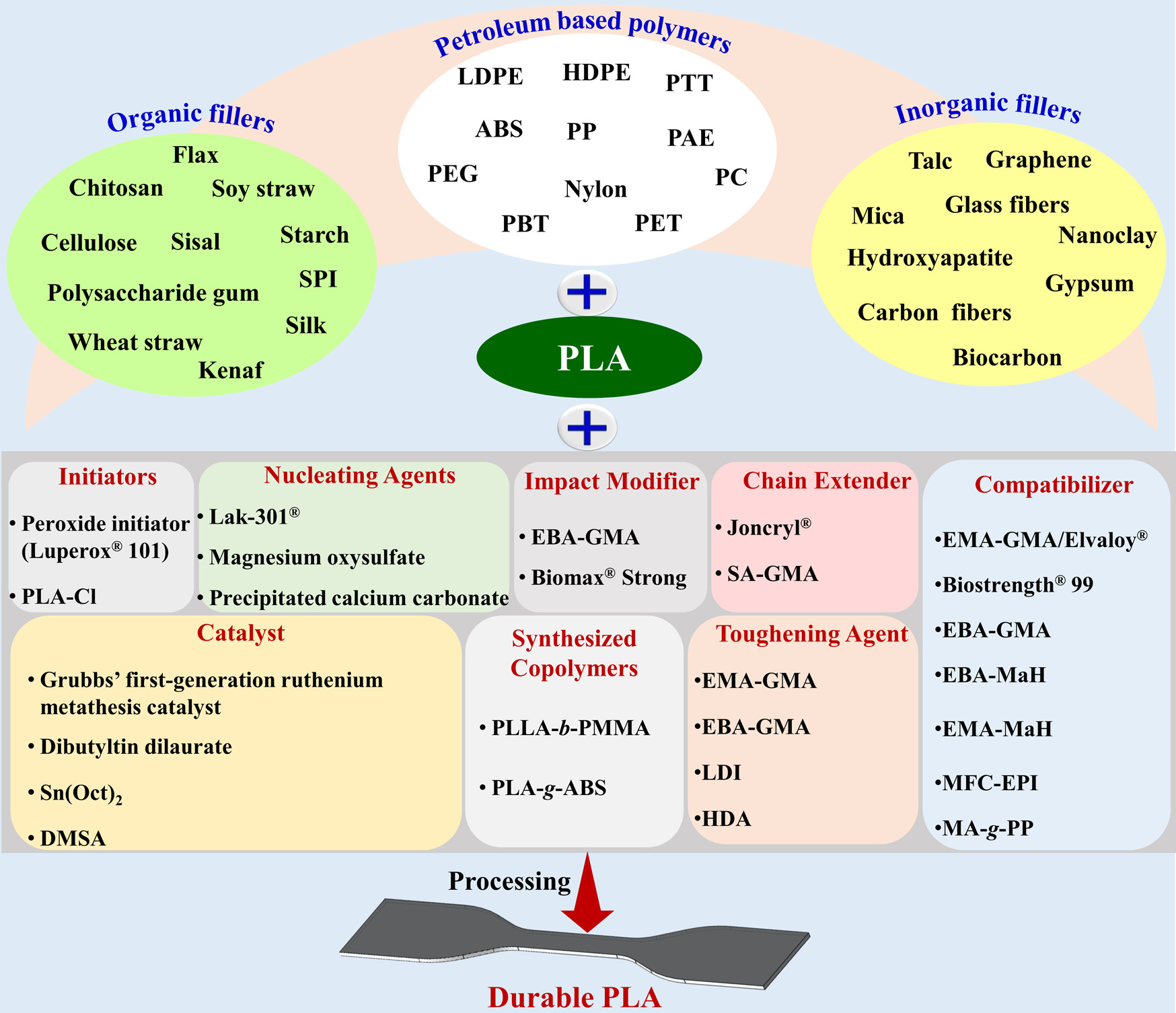Basic introduction
相溶性のない2種類のポリマーの混合を促し、安定したブレンドを作る補助剤は相溶化剤と呼ばれ、コンパチビライザーと呼ばれることもある。ここでいうポリマー相溶化剤である。
相溶性のない2種類のポリマーの混合を促し、安定したブレンドを作る補助剤は相溶化剤と呼ばれ、コンパチビライザーと呼ばれることもある。ここでいうポリマー相溶化剤である。
プラスチック改質では、PE-g-ST、PP-g-ST、ABS-g-MAH、PE-g-MAH、PP-g-MAHなどの物質が使用され、高性能のブレンド材料が作られる。
現在、無水マレイン酸は改良された相溶化剤にグラフトされることが多い。無水マレイン酸モノマーは、他のモノマーと比較して極性が高く、相溶化に優れた影響を与える。
By adding strong polar reactive groups, the maleic anhydride grafted compatibilizer increases the material’s polarity and reactivity. It is a kind of dispersion accelerator, compatibilizer, and polymer interfacial coupling agent. It is mostly used as a halogen-free filler, to strengthen glass fiber, to toughen, to bind metal, to determine alloy compatibility, etc. It can significantly increase filler dispersion and composite material compatibility, increasing the mechanical strength of the latter.
無水マレイン酸グラフトとの相溶化剤は、有機フィラーと無機フィラーの相溶性を高め、製品の引張強度と衝撃強度を上げ、高充填を実現し、樹脂の使用量を減らし、加工レオロジーを改善し、表面を滑らかにすることができる。
Variety of applications
(1) Filled with materials such as glass fiber, nylon, talcum powder, titanium dioxide, barium sulfate, calcium carbonate, and magnesium hydroxide.
(2) PET、PBT、PA用の強化剤。
(3) PP/PA, PC/ABS, PC/PBT, ABS/PBT, and PS/PBT alloys may be modified and made tougher using EMA, PTW, and GMA alloy compatibilizers.
For PA, PET, PBT and their alloy materials, EMA, PTW, and GMA are employed as compatibilizers and tougheners.
EAA is used to make materials like PE, PP, and their modified versions more compatible and durable.
For polyolefin low-smoke, halogen-free, and flame-retardant cable materials, EEA and EBA are employed as compatibilizers to increase the quantity of inorganic compounds added, enhance tensile strength, and elongation.
EEA and EBA are used to modify alloys like PS/PP, ABS/PC, ABS/PA, PS/PE, etc. in order to increase the product’s toughness, compatibility, and other general features.
ST-5 is utilized for polypropylene degrading masterbatch, color masterbatch, and flame retardant masterbatch.
Aluminum-plastic composite, iron-plastic composite, polyolefin/nylon system, filler masterbatch, color masterbatch, flame retardant masterbatch, and polyethylene wood plastic are all compatible with ST-6.
Silk, polyethylene filler masterbatch, color masterbatch, flame-retardant masterbatch, low-smoke, halogen-free flame-retardant cable materials, and aluminum-plastic composite polyethylene film are all made with ST-7.
ST-8 is utilized to make alloys like AS/PP, ABS/PC, ABS/PE, ABS/PA, and ABS/PET compatible.
ST-9 is employed as a strengthened, flame-resistant ABS/PA, PC/ABS, and ABS/PP alloy compatibilizer.
申し込み
(1) Used in relation to plastic alloy
Compatibility technology is primarily being developed for polymer material alloys. A multi-phase, multi-component system known as a polymer alloy is created by mixing two or more polymer materials with various characteristics and using the appropriate compatibilization processes. The compatibilizer is a crucial component in the creation of these polymer alloys as well as their mixing and modification. The tiny phase structure of the alloy technology is extremely well adjusted and controlled by the compatibilizer, allowing the blend material to attain excellent performance and functional effects. In PP/PE, PP/PA, PA/PS, PA/ABS, ABS/PC, PBT/PA, PET/PA, PP/POE, PE/EPDM, TPE/PU, and other alloys, compatibilizers are often employed.
(2) Applied to polymer modification
Since the compatibilizer serves as a “bridge” between non-polar and polar polymers by acting as an active free radical molecular carboxyl group, it is modified into a polar modified polymer before being combined with the polar polymer Compound blending, where the reaction between the two produces a good modified blending effect.

(3) Used for recycling discarded plastics
A better and more practical method for “comprehensive utilization of waste” and for addressing the issue of “white pollution” is to recycle discarded plastics using compatibilizers to create new plastic alloys or new modified plastics, which has significant social and business advantages. There are other examples from other nations. For instance, the Dutch National Mining Company’s BENNET compatibilizer is a unique compatibilizer for recycling waste plastics. Blending and regeneration of engineering plastics and olefin scraps, addition of 5%–10% compatibilizer as the interface layer between the sea phase or island phase, exertion of the compatibilizer’s bonding force, and preparation Turn into a new plastic alloy or modified plastic.
(4)Used in the fusion of polymers and fillers
Also known as a macromolecular coupling agent, compatibilizer. The compatibilizer has great coupling efficiency between the polymer and the filler and may be utilized for PE/CaCO3, PE/talcum powder, PA/GF, PRT/GT, etc. because the high molecular component is compatible with the high molecular polymer. The result is favorable when treatments are combined.
(5) Used to make polar resins tougher
Thermoplastic elastomer may be used as a toughening agent for PP, PE, PS, PA, and other plastics by adding a little quantity of compatibilizer. It has good softness, high elasticity, and low temperature performance. The most important “core” and “shell” compatibility of these tougheners is the compatibilizer. Using EPDM grafted MAH toughening agent as an illustration, it is possible to preserve outstanding physical attributes and toughness at a temperature of -45°C. The general dosage is 5%-10%.
(6) Used to enhance the functionality of plastics
Compatibilizers can also be used to enhance the surface qualities of plastics, such as gloss, printability, and antistatic adherence.
Effect
enhance the two polymers’ compatibility, enhance their adherence to one another, create a stable structure, and uniformize the scattered phase and continuous phase, or compatibilize, the two polymers. There are groups in the compatibilizer’s molecule that can physically or chemically connect with the two polymers, which explains why it can compatibilize two polymers with dissimilar characteristics.
パフォーマンス
いわゆる相溶化剤は、非相溶性のポリマー系にある方法で導入され、熱力学的には界面活性剤と考えられる。しかし、ポリマーアロイ系で利用される相溶化剤は、一般的に分子量が大きい。相溶化剤は、高温で混合・混練した後、2つのポリマー間の界面に閉じ込められ、界面張力を低下させ、界面層を厚くし、分散粒子のサイズを小さくする。その結果、系は最終的に巨視的に均一な熱力学的に安定な相構造を形成し、微視的な相分離を特徴とする。











